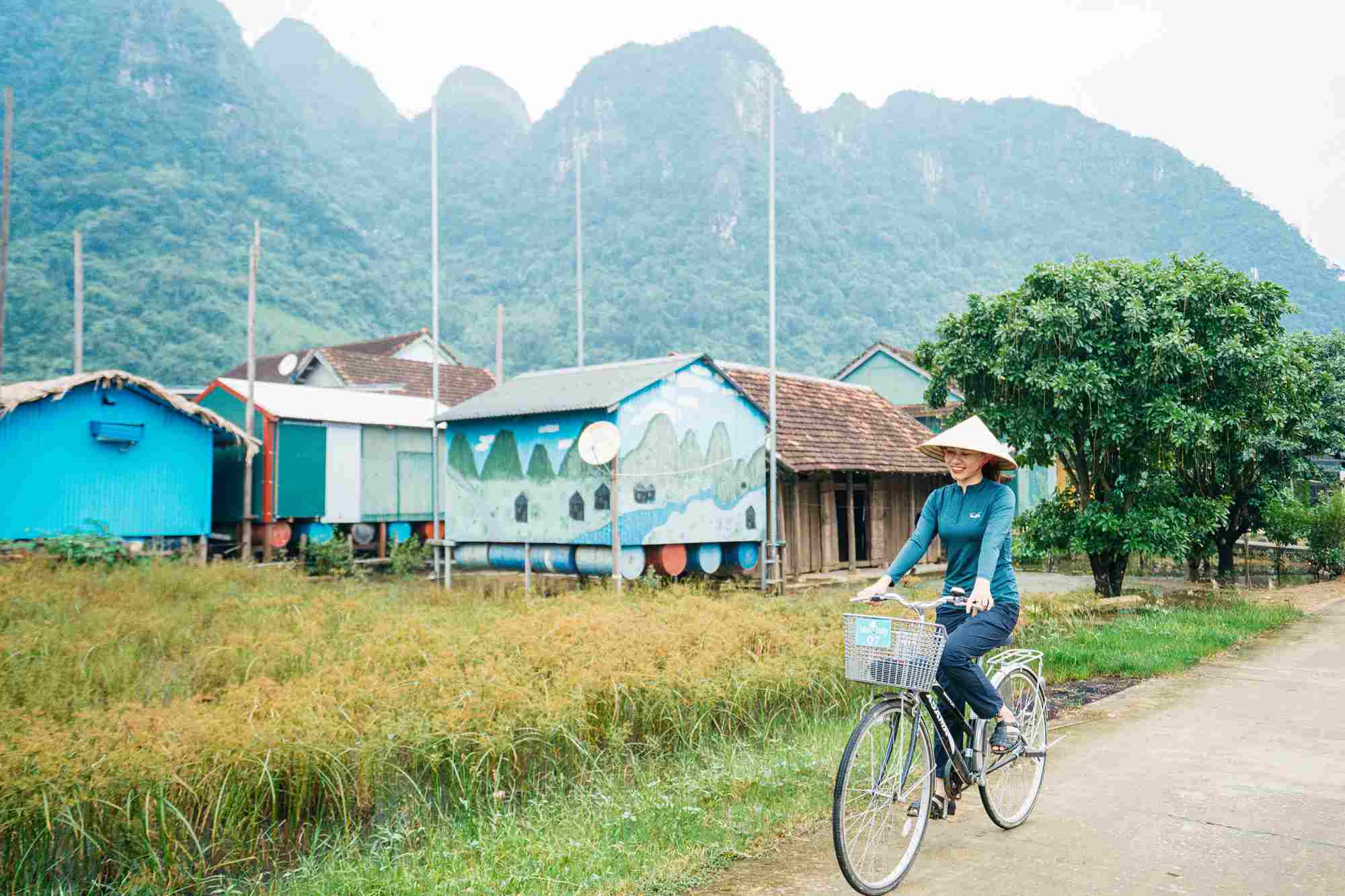Developing green tourism is an important strategic orientation of Vietnam’s tourism industry. In your opinion, how should we understand the concept of “green tourism”?
- Many places today only understand "green tourism" as planting trees or cleaning up trash. But in reality, "green" is understood in a much broader sense such as green growth, circular economy, in which "green" must include green planning, green infrastructure, green investment, green human resources, green management... Green infrastructure includes wastewater and waste treatment systems, clean energy production and use systems, clean water supply and use...
First, we need to save energy. Second, businesses need to invest in wastewater treatment systems to prevent pollution. Third, we need to use resources economically and efficiently.
In particular, we must protect natural and cultural resources, not allowing immediate benefits to destroy these resources. In particular, we need to create jobs and livelihoods for local communities.
When people are aware of the value of heritage and resources, they will be conscious of protecting resources. During the research and field trips, I remember most the visit to a community tourism business model in Van Ho, Son La. Trang A Chu, the owner of the homestay named after himself, welcomed us warmly like any other guests from afar. What I noticed in the homestay of this H'Mong owner is that every small item from the toothpick holder, trash can to the lamp stand, fireplace is made of wood or covered with bamboo.
The most impressive moment came from a very ordinary thing. While leading guests on a walk on the hill, Mr. A Chu saw a piece of trash falling on the side of the road and immediately bent down to pick it up. That small action is what he had to guide and encourage the people when everyone built a community tourism model. When people are aware of the issue of protecting the environment and resources, they not only bring benefits to themselves but also spread that spirit throughout the community, improving the quality of service for tourists.

Not only affecting tourists' awareness, how can developing green tourism help increase the number of high-spending and civilized tourists?
- The environment is an important factor that tourists are very concerned about today, especially those with high spending capacity. In particular, tourists from developed countries attach great importance to the issue of protecting resources and respecting local culture. Investing in sustainable development not only attracts tourists but also brings great economic efficiency, creates jobs and protects the environment. Countries with high tourism competitiveness such as Austria, Switzerland, Canada... all pay attention to environmental issues and this has enhanced their national competitiveness.
What are your suggestions on the legal aspect of issuing criteria/standards and guidelines related to the recognition of “Green Tourism Enterprises” and encouraging tourism enterprises to go green?
- Green labels for tourism businesses have long been applied in the ASEAN region. However, the concept of sustainability today is much broader than before 2015. The United Nations has put forward 17 sustainable development goals, including social equity and many other factors.
Therefore, new criteria are needed to assess sustainability in the tourism industry. The National Strategy on Green Growth for the period 2021 - 2030, with a vision to 2050, is being implemented, and this set of criteria needs to be issued soon for application.
I think there needs to be a certification body to confirm that businesses have met the requirements of sustainable development. The tourism industry also needs its own criteria to assess sustainability, not just stopping at green certification but also ensuring full compliance with the conditions and criteria.
Implementing sustainability criteria requires a great deal of effort from both businesses and regulators. Businesses need to be aware of the benefits of sustainable development and apply specific measures. At the same time, regulators need to provide guidance and support for businesses to implement. When the whole community works together, we can achieve sustainable development goals and protect resources for future generations.
Thanks for sharing!
(Posted on the special edition of Lao Dong Xuan At Ty)











